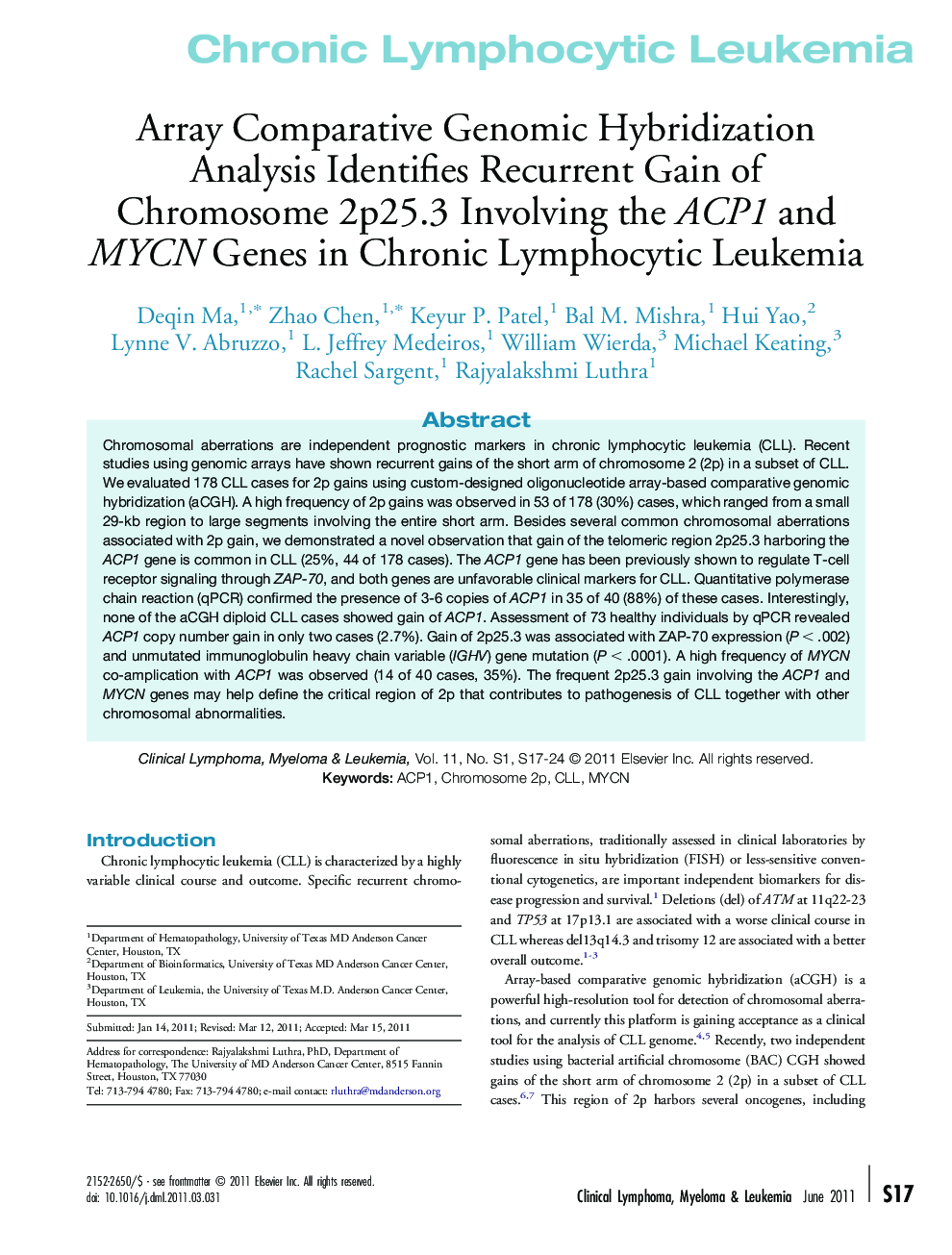| Article ID | Journal | Published Year | Pages | File Type |
|---|---|---|---|---|
| 2755154 | Clinical Lymphoma Myeloma and Leukemia | 2011 | 8 Pages |
Chromosomal aberrations are independent prognostic markers in chronic lymphocytic leukemia (CLL). Recent studies using genomic arrays have shown recurrent gains of the short arm of chromosome 2 (2p) in a subset of CLL. We evaluated 178 CLL cases for 2p gains using custom-designed oligonucleotide array-based comparative genomic hybridization (aCGH). A high frequency of 2p gains was observed in 53 of 178 (30%) cases, which ranged from a small 29-kb region to large segments involving the entire short arm. Besides several common chromosomal aberrations associated with 2p gain, we demonstrated a novel observation that gain of the telomeric region 2p25.3 harboring the ACP1 gene is common in CLL (25%, 44 of 178 cases). The ACP1 gene has been previously shown to regulate T-cell receptor signaling through ZAP-70, and both genes are unfavorable clinical markers for CLL. Quantitative polymerase chain reaction (qPCR) confirmed the presence of 3-6 copies of ACP1 in 35 of 40 (88%) of these cases. Interestingly, none of the aCGH diploid CLL cases showed gain of ACP1. Assessment of 73 healthy individuals by qPCR revealed ACP1 copy number gain in only two cases (2.7%). Gain of 2p25.3 was associated with ZAP-70 expression (P < .002) and unmutated immunoglobulin heavy chain variable (IGHV) gene mutation (P < .0001). A high frequency of MYCN co-amplication with ACP1 was observed (14 of 40 cases, 35%). The frequent 2p25.3 gain involving the ACP1 and MYCN genes may help define the critical region of 2p that contributes to pathogenesis of CLL together with other chromosomal abnormalities.
